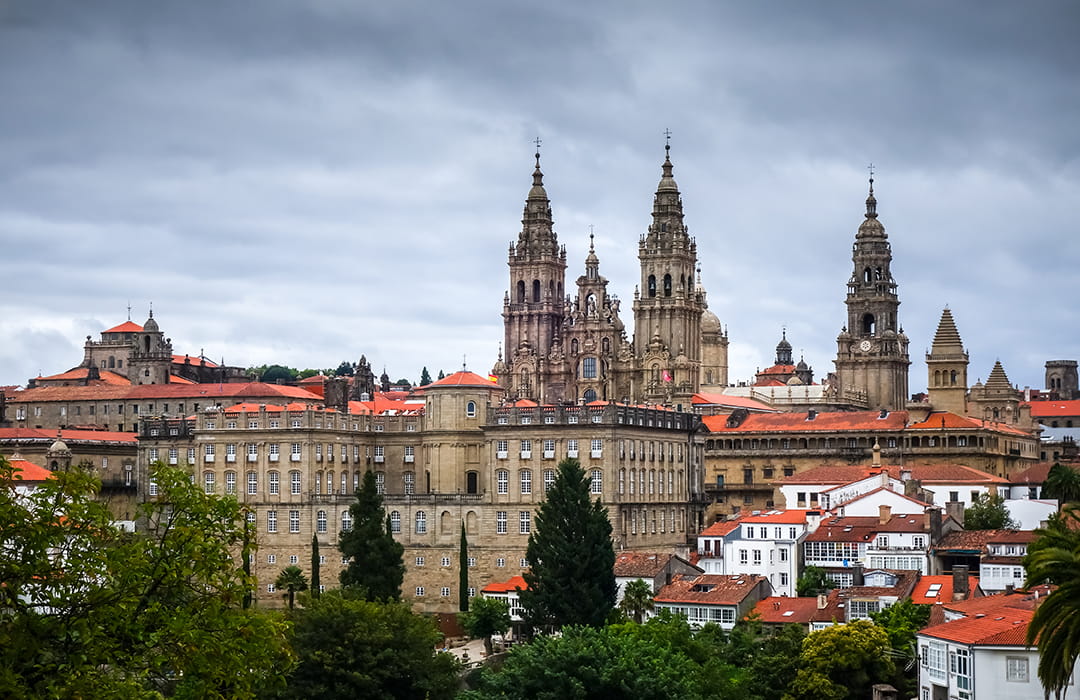The
Cathedral of Santiago
is the most important work of Romanesque art in Spain and a reference point for all the pilgrimage routes that make up the Camino de Santiago.
This millenary architectural ensemble accompanied the creation and urban development of Santiago de Compostela, a city declared a World Heritage Site by UNESCO in 1985. The construction originates in the discovery of the tomb of the Apostle Santiago in the IX century, identified by the bishop Teodomiro de Iria Flavia in a Roman temple.
King Alfonso II ordered the construction of a small temple around this building, but the increase in pilgrimages led to a new and more ambitious construction in 1075, during the reign of Alfonso VI and under the archiepiscopal direction of Diego de Peláez. The construction of the Romanesque cathedral continued during the archbishopric of Diego Xelmirez.
The cathedral is built in granite masonry with slab roofs of the same material, and has a Latin cross plan, longitudinal arm and transept of three naves.
The side chapels are arranged in an orderly fashion along the entire length of the church and have their own individual space, although only some of the Romanesque chapels from the ambulatory have been preserved.
The different façades reflect the multiplicity of styles that the church houses.The facade of the Acibechería is neoclassical, the facade of As Praterías is Romanesque, the Puerta Santa is baroque and only opens in Holy Years, and the facade of the Obradoiro is a combination of stone and glass, with a prominent window in the central body.
In addition, the Cathedral of Santiago de Compostela is not only one of the most important religious monuments in Europe, but also a collection of unique works of art.
Among them is the Pórtico de la Gloria, a masterpiece of Mestre Mateo and Romanesque sculpture, dating from 1188.
The piece presents a portico with three arches: the central one represents the Glory, the left one the Jewish people waiting in the Limbo of the Just for the arrival of Christ and the right one the Final Judgment, to which all human beings will be subjected.
The Corticella, on the other hand, is the oratory founded in the 9th century and later used by the Benedictines. This was absorbed by the successive constructive enlargements to which the Cathedral was subjected.
The temple is open to visitors every day of the year, with free admission, between 07:00 and 21:00 hours, and with access through the Plaza de As Praterías and the Puerta Santa.






